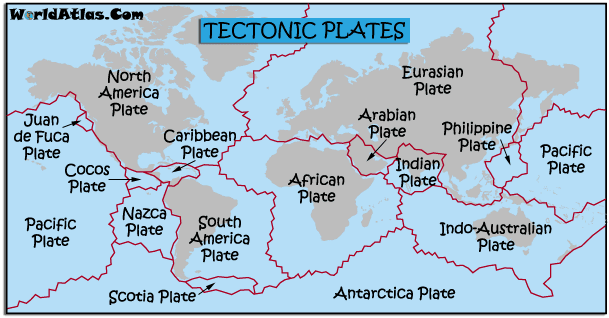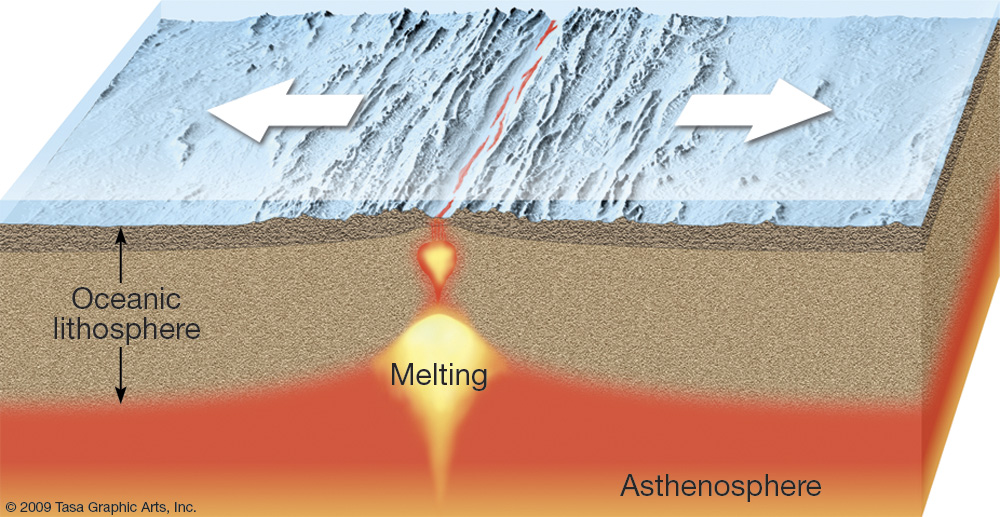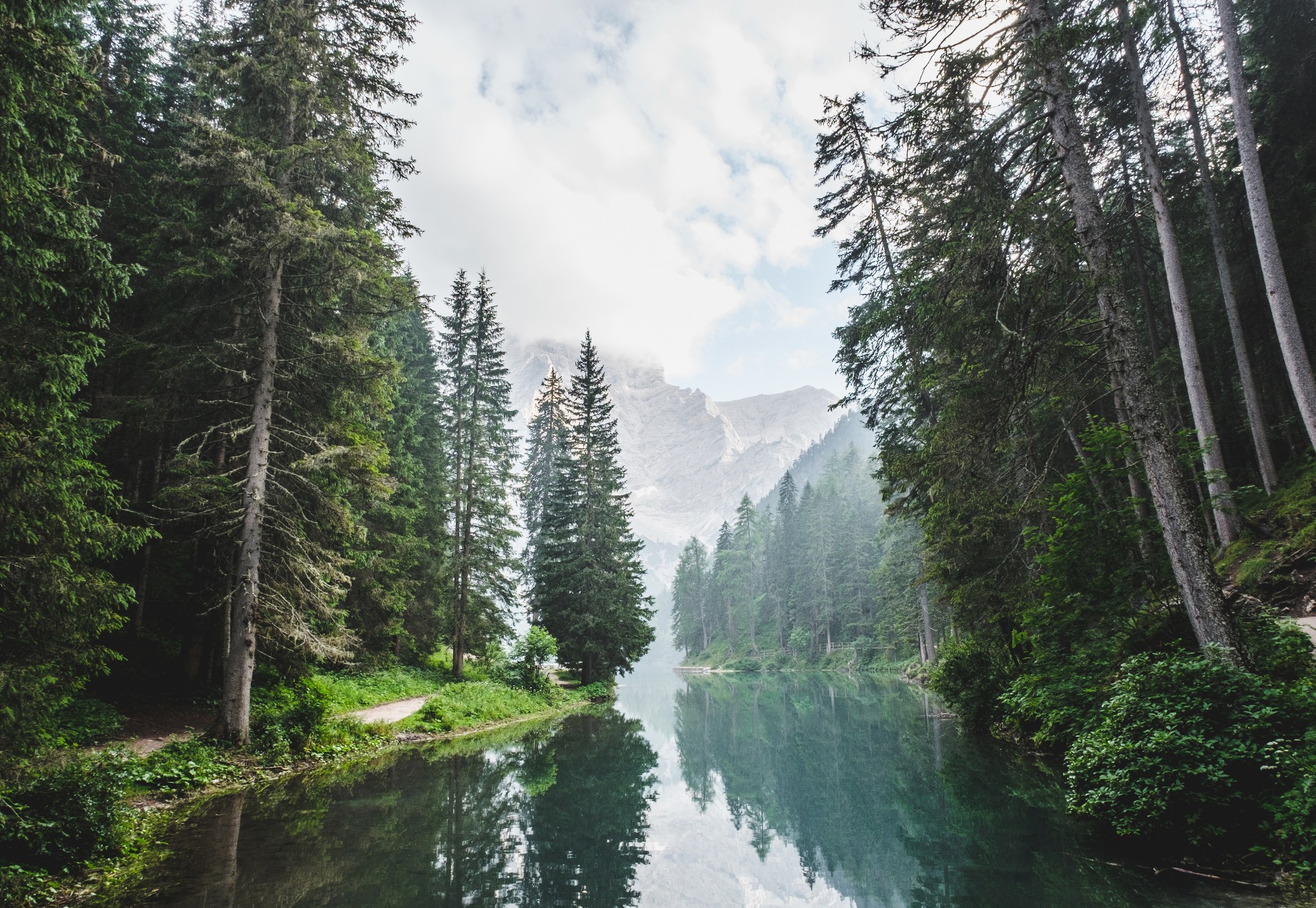Tectonic Plates
The Earth's crust is made up of huge pieces called plates, which fit together like a jigsaw puzzle.
Sometimes these plates move and cause things to happen on the surface of the earth such as Volcanoes, Earthquakes and Tsunamis.
The theory that explains this process is called plate tectonics.

________________________________________________________
Convection currents
Convection currents occur when there are differences in temperature between two parts of a fluid. When this happens, hot fluids rise and cold fluids sink. This causes movements or currents in the fluid.

This is what happens in Earth´s mantle, hot magma rises and cold rocks sink, creating convection currents and making the tectonic plates move.
_______________________________________________________
Tectonic plates movement
The movement of tectonic plates is most evident at the boundaries between the plates.
There are three main types of boundaries:

1.- Convergent Boundaries - A convergent boundary is where two tectonic plates push together. Sometimes one plate will move under the other. This is called subduction.
Although the movement is slow, convergent boundaries can be areas of geological activity such as the forming of mountains and volcanoes. They can also be areas of high earthquake activity.


_____________________________________________________


